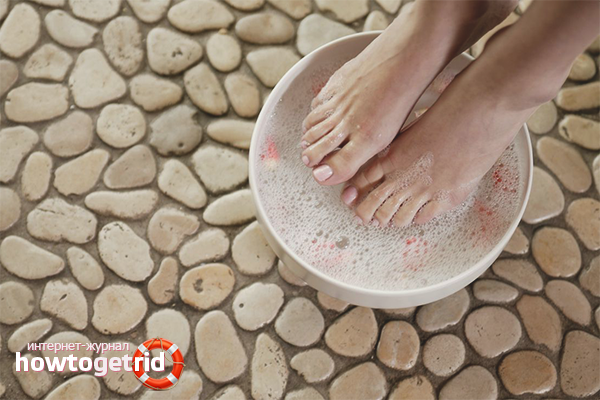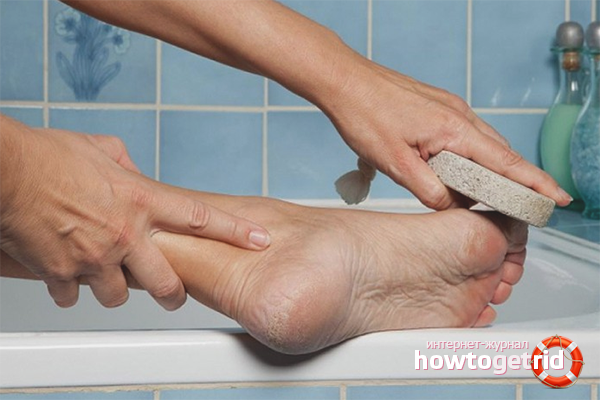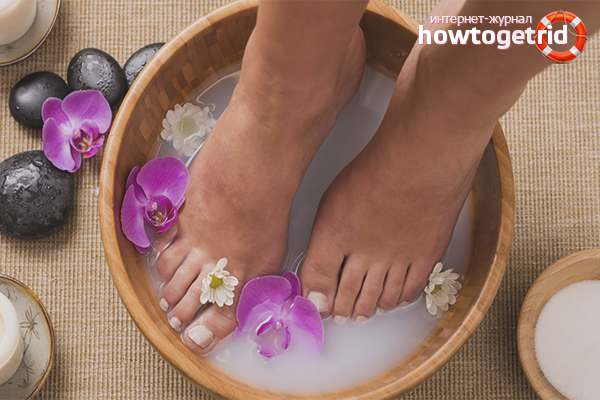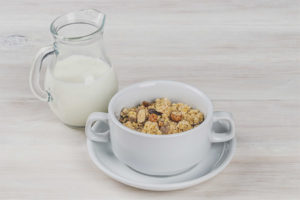The content of the article
Feet are considered to be a delicate part of the human body, they require thorough hygiene, for this reason basic care should not be neglected. Many women and girls mistakenly believe that heels can only be cleaned with professional preparations. In attempts to reach the ideal, they spend fabulous money on salon procedures. In order to keep the budget and comprehend the heel processing technology, it is important to adhere to the recommendations that we will talk about today. Consider the important aspects in order.
Hydrogen peroxide to clean the heels
A hydrogen peroxide solution is rightfully considered a universal drug. Due to its antiseptic, bactericidal and anti-inflammatory action, the product eliminates microcracks, effectively cleanses the skin, removes dead skin particles, softens corns and saturates cells with oxygen. Peroxide baths for heels can be used no more than 1 time per week, since the drug dries the skin very much.
Peroxide bath
- The simplest way to clean the heels is a solution of hydrogen peroxide mixed with warm water. Pour 2.2-2.5 liters into the basin. warm (almost hot) water. The main thing is that the skin can withstand a similar temperature regime. Now add one bottle of hydrogen peroxide (3% concentration) to the water tank, mix.
- Dip the legs into the mixture, wait 10-15 minutes, then pull one leg out. During this period, the skin will steam up and become soft, cleansing will be many times more effective. The procedure can only be started if the heels turn white after being in the solution. If the top layer remains yellow or greenish, wait another 5-7 minutes.
- After the set time, remove one leg, wipe with a towel, walk along the heels with a pumice, roller or a special file with small abrasive particles. You can also use an electric device or a professional pedicure machine, it all depends on the capabilities.
- Remove only softened (dead) particles, do not try to remove healthy skin cells. Clean each heel one at a time, periodically wet the feet in the solution to evaluate the result. After the procedure, lubricate the skin with a nourishing cream, put on cotton socks, do not remove them for 5 hours.
Tray with sea salt and peroxide
- In addition to cleansing the heels of yellowness and green, the composition heals wounds and acts on the skin in a complex. Prepare a basin for pedicure, pour 1.3 liters into it. boiling water, pour 75 g. crushed sea salt without perfumes, dyes and additives.
- Add 5 ml to the bath. eucalyptus ether, 10 ml. sea buckthorn oil, 55 ml. olive oil. Pour in 70 ml. hydrogen peroxide concentration of 3%, mix everything. Add a little liquid soap, if desired, to make foam.
- Cool the mixture or dilute it with water to an acceptable temperature, immerse your legs, enjoy the procedure for 10-20 minutes. From time to time, take out your leg and inspect the skin, if it has brightened, proceed to the pedicure.
- Treat keratinized heel skin with a pumice, roller scraper or cosmetic knife with an integrated blade. Sand the surface to eliminate microcracks. Pay due attention to the yellow and green areas of the skin, rub them as long as possible.
- In cases where there are large cracks, creases, severe wounds on the heels, pour peroxide into the cavity. Wait for the hissing to finish, then lubricate the skin with a regenerating ointment and wrap it with a bandage, put on socks. Such actions will significantly moisturize the skin, prevent its further cracking.
Acetylsalicylic acid and peroxide bath

- Aspirin, or acetylsalicylic acid, prevents the festering of the skin and heals cracks. To prepare the bath, pour 2.5 l into the basin. hot water, add 10 tablets of aspirin or pour 55 ml. acetylsalicylic acid solution.
- Add 30 ml. liquid glycerin, mix. Check the temperature: if the water is not very hot, add 45 ml. hydrogen peroxide (concentration of 3%).
- Dip your feet in the bath, wait no longer than a quarter of an hour. Over the specified period of time, the dead particles should turn white. Otherwise, the exposure time must be increased to 20 minutes.
- When the feet become soft, walk along them with an abrasive file, a roller for the heels or a pumice. Remove dead particles, wash your feet.
- After cleaning, mash 4 aspirin tablets between two tablespoons, mix the powder with a fat cream. Put the obtained “ointment” on the heels, wrap it with a bandage, put on shoe covers and socks.
- Wait 3 hours, then again treat the feet with a pumice stone if the situation requires it. Complete the procedure with foot cream. Perform manipulations no more than 1 time in 2 weeks.
Body bath and peroxide bath
- Bodyagi is a viscous algae that grows in fresh water (lake, river, etc.). To apply the product as efficiently as possible, dilute 80 ml. hydrogen peroxide in 2.1 liters. warm water.
- Dip the legs into the solution, wait 15 minutes. After this time, scrape off the softened keratinized cells with a cosmetic knife (pedicure), pumice, roller or high abrasive file. Lower the feet into the solution again, wait another 10 minutes.
- Now prepare the mixture for the mask: mix 30 gr. freshwater bodyagi powder with 20 ml. hydrogen peroxide, turn the mass into paste. Put on the heels one by one, fix with a wet bandage, wrap the feet with cling film or put on shoe covers.
- The exposure time of the mask varies between 15-30 minutes, it all depends on the degree of contamination of the skin of the heels. After the set period, do not rinse off the mask, massage your feet by carefully rubbing the mixture.
- Scrape off the composition with your hands, wash your feet, grease them with pure glycerin, tea tree oil or any ether (geranium, lemon, etc.). This method of cleaning is good in that the bath in combination with a mask can be done 2 times a week, in some cases more often.
Heel bath with milk
- Rub on a medium or fine grater half of the bar of baby soap, which includes lotion. Pour 1.8 L into a basin or wide pan. hot water, send chips to the liquid. Wait for its complete dissolution, then add 1.5 liters. hot fat milk.
- Place the legs in the composition, keep them in the bath until it cools down. After the specified time, massage the heels with a coffee scrub, then proceed to cleanse. Moisten a pumice stone or abrasive brush for pedicure in hydrogen peroxide, begin to remove the upper (dead) layer of skin, which has a yellowish tint.
- When you process two heels, mix the baby cream with sea buckthorn oil in a 3: 1 ratio, lubricate with the composition of the foot, put plastic bags on your feet. Wait 3 hours, remove the remaining product with paper towels.
Glycerin and vinegar compress
- Buy from a pharmacy or order pure glycerin online. Buy apple cider vinegar at a concentration of 6–9% from a health food store. Mix glycerin with vinegar in a ratio of 3: 1. Fold the gauze or bandage in 5 layers, dip the cloth in the cooked product, let it soak. Squeeze a little, attach to the heels, fix with cling film.
- Put on warm socks, keep the composition for about 3 hours (if possible leave it overnight), then remove the compress. Rub the heels with a pumice stone, scraping the yellowed patches of skin with a pedicure knife or roller. Sand the surface with a fine abrasive file.
- Apply a nourishing foot cream (can be replaced with baby or anti-frost). Do not be lazy to prepare a compress 3-4 times a week, the result will be noticeable after the first application.
It is easy to clean the yellowed skin of the heels, if you have sufficient knowledge regarding the technology of preparation of folk remedies. Regularly make baths based on hydrogen peroxide and acetylsalicylic acid, bodyagi powder (seaweed), fat milk, and crushed sea salt. Do not be lazy to apply a compress of apple cider vinegar and glycerin.
Video: how to care for your heels











Submit